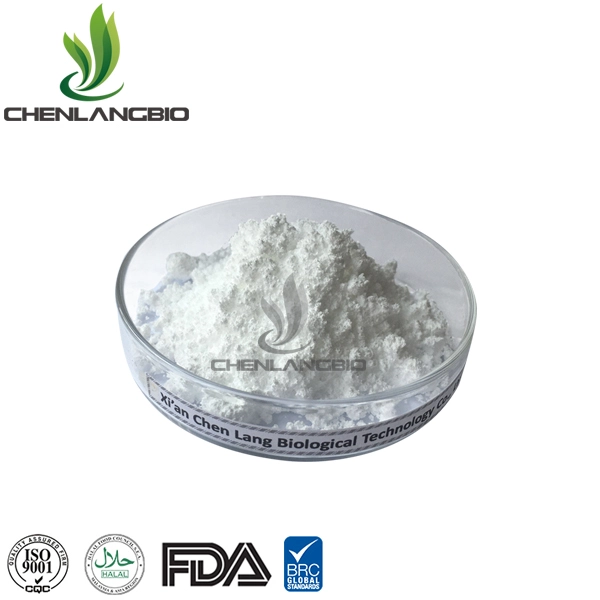What Is The Mechanism Of Action Of Dyphylline
2024-06-21 15:46:58
Dyphylline, also known as diprophylline, is a xanthine derivative with notable bronchodilator and vasodilator properties. It is primarily used to treat respiratory conditions such as asthma, chronic bronchitis, and emphysema by relaxing the muscles in the lungs and chest to facilitate easier breathing.

How Does Dyphylline Improve Respiratory Function?
Dyphylline works through multiple mechanisms to improve respiratory function. Its primary action is the inhibition of phosphodiesterase enzymes, specifically PDE III and PDE IV, which leads to increased levels of cyclic adenosine monophosphate (cAMP) in cells. Elevated cAMP levels result in the relaxation of bronchial smooth muscles, which promotes bronchodilation and facilitates better airflow through the lungs. Additionally, dyphylline has a mild antagonistic effect on adenosine receptors, which further contributes to its bronchodilatory effects.
Dyphylline’s vasodilatory effects also play a role in its therapeutic efficacy. By relaxing the smooth muscles of blood vessels, dyphylline can improve blood flow and reduce blood pressure. This dual action is particularly beneficial for patients with respiratory conditions that may also involve vascular complications.
Pharmacokinetics and Administration
Dyphylline is rapidly absorbed from the gastrointestinal tract following oral administration, achieving peak plasma concentrations within 45 minutes to 2 hours. Unlike other xanthines, it is not metabolized extensively by the liver and is excreted largely unchanged by the kidneys. This pharmacokinetic profile minimizes the risk of hepatic interactions and makes dyphylline suitable for patients with liver impairments.
Mechanism of Action

The therapeutic effects of dyphylline are primarily attributed to its role as a phosphodiesterase inhibitor. By blocking the activity of phosphodiesterase enzymes, dyphylline prevents the breakdown of cAMP. Increased cAMP levels lead to relaxation of bronchial smooth muscle and, consequently, bronchodilation. This mechanism is critical for alleviating symptoms of asthma and other obstructive pulmonary diseases where airway constriction is a significant issue.
Moreover, dyphylline exhibits mild antagonistic properties towards adenosine receptors. Adenosine typically induces bronchoconstriction and promotes inflammatory responses. By inhibiting these receptors, dyphylline further contributes to airway relaxation and reduction in inflammation, enhancing its effectiveness in respiratory therapy.
Clinical Applications
Dyphylline's efficacy in managing respiratory conditions extends beyond its bronchodilatory properties. Its vasodilatory action is beneficial in conditions where improved blood flow can enhance overall respiratory function. For instance, in chronic bronchitis, where the bronchial tubes are persistently inflamed and narrowed, dyphylline helps by easing blood flow and reducing pressure on the respiratory system.
Pharmacokinetics and Metabolism
After oral administration, dyphylline is rapidly absorbed into the bloodstream, reaching peak concentrations relatively quickly. This rapid absorption is advantageous in acute scenarios where prompt relief from bronchoconstriction is required. Once in the bloodstream, dyphylline's primary mode of excretion is through the kidneys, with a substantial proportion being excreted unchanged. This characteristic is particularly useful for patients with hepatic impairments, as it reduces the likelihood of drug accumulation and potential toxicity.
Dosage and Administration
The standard dosage of dyphylline varies based on the severity of the condition being treated and the patient's response to the medication. Typically, it is administered orally in tablet form, and the dosage may range from 200 to 800 mg per day, divided into multiple doses. For optimal absorption, it is recommended to take dyphylline on an empty stomach, with a full glass of water, either 30 minutes to an hour before meals or two hours after meals.
What are the Common Side Effects of Dyphylline?
What Side Effects Should Patients Be Aware Of?
Common side effects of dyphylline include nausea, vomiting, headache, dizziness, insomnia, and increased urination. These side effects are typically mild and manageable but can occasionally be severe. Serious side effects, although rare, include cardiac arrhythmias, severe hypotension, and muscle spasms. Monitoring for these side effects is essential, especially in patients with underlying health conditions that may exacerbate these reactions.
Managing Side Effects
•Gastrointestinal Issues
Nausea and vomiting are among the most common side effects experienced by patients taking dyphylline. These can often be managed by taking the medication with food or switching to a different formulation if available. Drinking plenty of water and maintaining an adequate diet can also help mitigate these effects.
•Central Nervous System Effects
Headaches and dizziness are frequently reported but can usually be controlled with over-the-counter pain relievers and ensuring proper hydration. Insomnia, another common issue, can be minimized by taking the last dose of dyphylline several hours before bedtime to reduce stimulant effects during sleep.
•Cardiac Considerations
Although rare, cardiac arrhythmias and severe hypotension are serious side effects that necessitate immediate medical attention. Patients with pre-existing heart conditions should be closely monitored, and any new symptoms should be promptly reported to a healthcare provider. Dose adjustments or discontinuation of dyphylline might be necessary in such cases.
How Should Dyphylline Be Administered to Minimize Side Effects?
Dyphylline should be taken as prescribed by a healthcare provider, usually on an empty stomach to enhance absorption. Patients are advised to take it with a full glass of water, either 30 minutes to an hour before meals or two hours after meals. Regular monitoring and follow-up appointments are crucial to adjust dosages and assess the medication's effectiveness and safety. In cases of missed doses, patients should take the missed dose as soon as possible unless it is almost time for the next scheduled dose, in which case the missed dose should be skipped to avoid doubling up.
•Monitoring and Follow-Up
Regular follow-up appointments are crucial for patients taking dyphylline. During these visits, healthcare providers can monitor the patient’s response to the medication, adjust dosages as necessary, and check for any adverse effects. Blood tests may be conducted periodically to ensure the drug is being metabolized and excreted properly.
•Patient Education
Educating patients on the proper administration of dyphylline is essential for minimizing side effects. Patients should be advised to take the medication exactly as prescribed and not to adjust the dose without consulting their healthcare provider. Additionally, they should be aware of the signs of serious side effects and instructed to seek medical attention if they experience symptoms such as severe dizziness, palpitations, or muscle spasms.
Can Dyphylline Interact with Other Medications?
What Are the Potential Drug Interactions with Dyphylline?
Dyphylline can interact with several medications, potentially altering their effectiveness or increasing the risk of side effects. For instance, beta-blockers can reduce the bronchodilatory effects of dyphylline, while tricyclic antidepressants can increase the risk of cardiac side effects. It is crucial for patients to inform their healthcare providers about all medications they are taking to avoid harmful interactions. Additionally, dyphylline may interact with medications like adenosine and regadenoson, which are usually not recommended to be used concurrently unless absolutely necessary.
How Should Patients Manage These Interactions?
Patients should have regular consultations with their healthcare providers to discuss potential interactions. Dose adjustments and careful monitoring can mitigate the risks associated with drug interactions. For example, if dyphylline is prescribed alongside beta-blockers, close monitoring of respiratory function and adjustment of dyphylline dosage may be necessary to maintain therapeutic efficacy.
Potential Drug Interactions
•Beta-Blockers
Beta-blockers, commonly used for managing hypertension and cardiac conditions, can diminish the bronchodilatory effects of dyphylline. This interaction is particularly concerning for patients with asthma or other obstructive pulmonary diseases. Healthcare providers may need to choose alternative medications or closely monitor respiratory function if concurrent use is unavoidable.
•Tricyclic Antidepressants
Tricyclic antidepressants can potentiate the cardiac side effects of dyphylline, increasing the risk of arrhythmias and severe hypotension. Patients on these medications should be monitored for cardiac symptoms, and dose adjustments may be necessary to mitigate these risks.
•Antibiotics
Certain antibiotics, particularly macrolides and quinolones, can increase the plasma concentration of dyphylline by inhibiting its excretion. This can elevate the risk of side effects and toxicity. Patients should be monitored for signs of dyphylline overdose, such as severe nausea, vomiting, or neurological symptoms, and doses should be adjusted accordingly.
Management Strategies
•Regular Consultations
Patients should have regular consultations with their healthcare providers to discuss potential interactions. These appointments provide an opportunity to review all current medications and assess the need for any changes. It is essential for patients to disclose all prescription and over-the-counter medications, supplements, and herbal products they are taking to their healthcare provider.
•Dose Adjustments
In cases where drug interactions are identified, dose adjustments may be necessary to maintain therapeutic efficacy while minimizing the risk of adverse effects. For example, if dyphylline is prescribed alongside a beta-blocker, the healthcare provider might lower the dyphylline dose and increase monitoring of respiratory function to ensure effective management.
•Monitoring
Close monitoring is crucial when dyphylline is used in combination with other medications. This may involve regular blood tests to check drug levels, as well as clinical assessments to detect any emerging side effects. Patients should be educated on the signs of potential drug interactions and instructed to report any new or worsening symptoms promptly.
Conclusion
Dyphylline is a valuable medication for the long-term management of respiratory conditions such as asthma, chronic bronchitis, and emphysema. Its dual action as a bronchodilator and vasodilator, along with its favorable pharmacokinetic profile, makes it a preferred option for many patients. However, awareness of its potential side effects and interactions with other medications is crucial for safe and effective use. Regular monitoring and adherence to prescribed guidelines can help maximize the benefits of dyphylline while minimizing the risks. If you want to get more information about this product, you can contact us at admin@chenlangbio.com
References
"Dyphylline: Uses, Interactions, Mechanism of Action | DrugBank Online."
"Dyphylline: Dosage, Mechanism/Onset of Action, Half-Life - Medicine.com."
"Dyphylline (Oral Route) Proper Use - Mayo Clinic."
"Diprophylline - Wikipedia."
"Dyphylline - Wikidoc."
"Lufyllin (Dyphylline): Side Effects, Uses, Dosage - RxList."
"Pharmacokinetics and pharmacodynamics of dyphylline."
"Dyphylline Advanced Patient Information - Drugs.com."
"Theophylline: Uses, Interactions, Mechanism of Action - DrugBank Online."
"Dilor, Lufyllin (dyphylline) dosing, indications, interactions, adverse effects - Medscape."
Send Inquiry
Related Industry Knowledge
- Is Kopexil Effective for Male and Female Pattern Baldness?
- Pro-xylane Powder: Anti-Aging Miracle
- Who Should Avoid Hops
- Is Ectoin Good for Eczema
- What Is Difference Between Tranexamic Powder, Alpha Arbutin Powder and Nicotinamide
- Does Elderberry Extract Powder Good For Flu
- Lotus Leaf Extract Weight Loss
- Are Beta Carotene Supplements Safe
- Unlock the Power of Astaxanthin: The Ultimate Antioxidant from Haematococcus Pluvialis Extract
- What Does Coenzyme Q10 Do for Your Body









